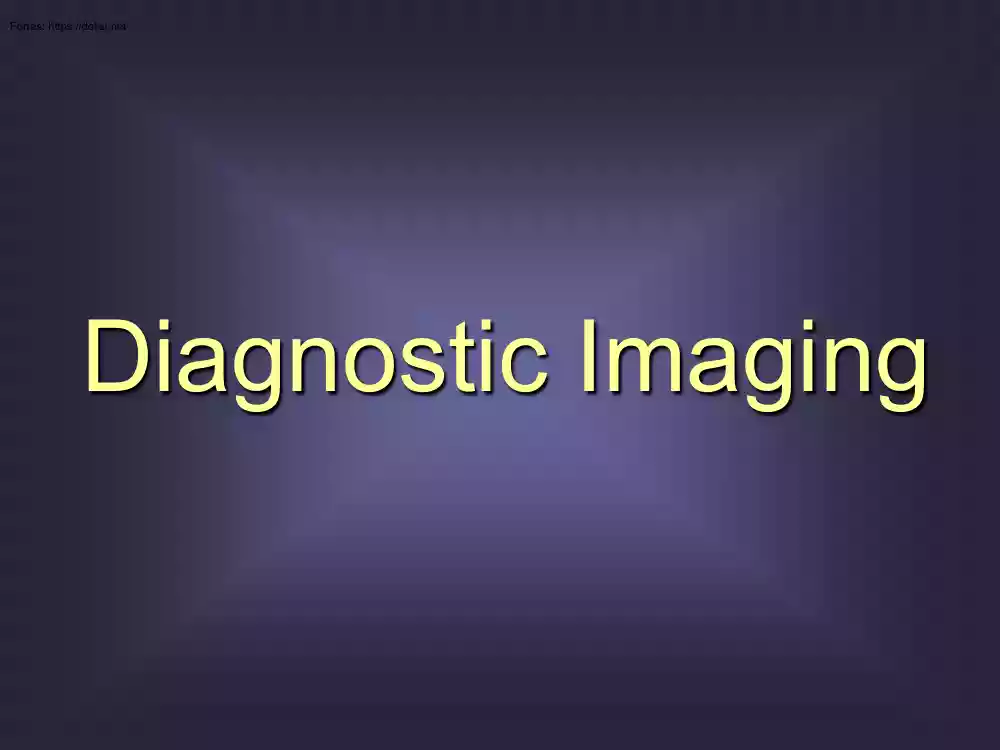Please log in to read this in our online viewer!

Please log in to read this in our online viewer!
No comments yet. You can be the first!
What did others read after this?
Content extract
Diagnostic Imaging Principle of diagnostic imaging • To obtain visual information from tissues/organs, in most cases: • ENERGY TRANSMISSION to organism • Interaction • Retrieval of modified energy carrying signals • Signal processing Physics of diagnostic imaging Propagating energy: wave or radiation Electromagnetic waves – Radiography, fluoroscopy – CT – MRI – Endoscopy – Light microscopy – Telethermography – Scintigraphy, SPECT (γ-rays) Mechanical waves – (Ultra)sonography DIAGN. RADIOLOGY Corpuscular radiation – Electron microscopy (β-) – PET (β+) DIAGN. IN VIVO NUCLEAR MEDICINE Electromagnetic waves – Radiography, fluoroscopy – CT – MRI – Endoscopy – Light microscopy – Telethermography – Scintigraphy, SPECT (γ-rays) – Scintigraphy, SPECT (γ-rays) – CT, radiography, fluoroscopy (x-rays) – Light microscopy, endoscopy – Telethermography – MRI Physics diagnostic There are of therapeutic fields imaging
as well Propagating energy: wave or radiation Electromagnetic waves – Radiography, fluoroscopy – CT – MRI – Endoscopy – Light microscopy – Telethermography – Scintigraphy, SPECT (γ-rays) Mechanical waves – (Ultra)sonography DIAGN. RADIOLOGY Corpuscular radiation – Electron microscopy (β-) – PET (β+) DIAGN. IN VIVO NUCLEAR MEDICINE There are therapeutic fields as well • Interventional radiology • Radiotherapy Where is the source? Outer Inner source of radiation/waves X-ray, CT, US MRI, NM Interaction between radiation/wave & medium a) Reflection b) Change in direction (e.g refraction) c) d) (+ Absorption Scattering Divergation ATTENUATION) CONTRAST AGENTS • Better contrast • More details • Depiction of movement E.g circulation kinetics Diagnostic imaging means consultation
as well Propagating energy: wave or radiation Electromagnetic waves – Radiography, fluoroscopy – CT – MRI – Endoscopy – Light microscopy – Telethermography – Scintigraphy, SPECT (γ-rays) Mechanical waves – (Ultra)sonography DIAGN. RADIOLOGY Corpuscular radiation – Electron microscopy (β-) – PET (β+) DIAGN. IN VIVO NUCLEAR MEDICINE There are therapeutic fields as well • Interventional radiology • Radiotherapy Where is the source? Outer Inner source of radiation/waves X-ray, CT, US MRI, NM Interaction between radiation/wave & medium a) Reflection b) Change in direction (e.g refraction) c) d) (+ Absorption Scattering Divergation ATTENUATION) CONTRAST AGENTS • Better contrast • More details • Depiction of movement E.g circulation kinetics Diagnostic imaging means consultation




 Just like you draw up a plan when you’re going to war, building a house, or even going on vacation, you need to draw up a plan for your business. This tutorial will help you to clearly see where you are and make it possible to understand where you’re going.
Just like you draw up a plan when you’re going to war, building a house, or even going on vacation, you need to draw up a plan for your business. This tutorial will help you to clearly see where you are and make it possible to understand where you’re going.